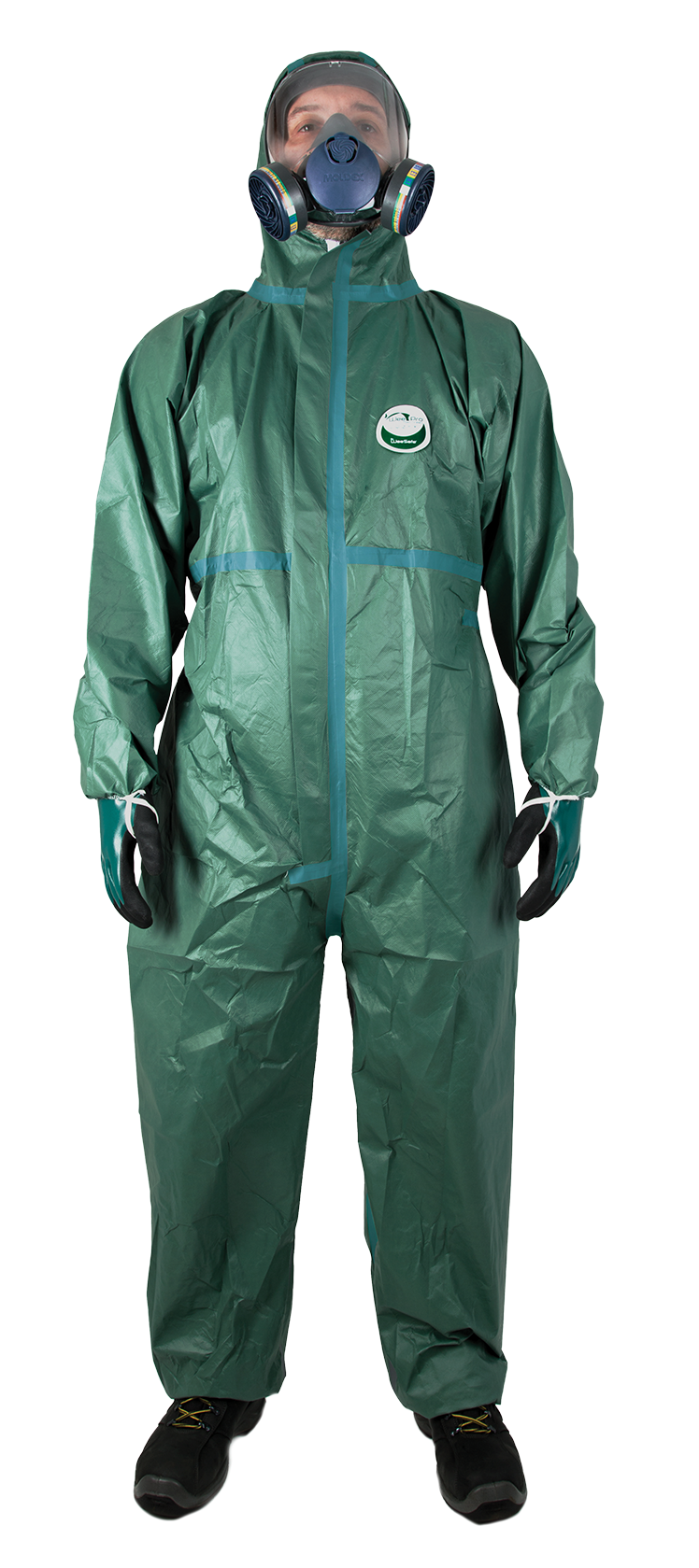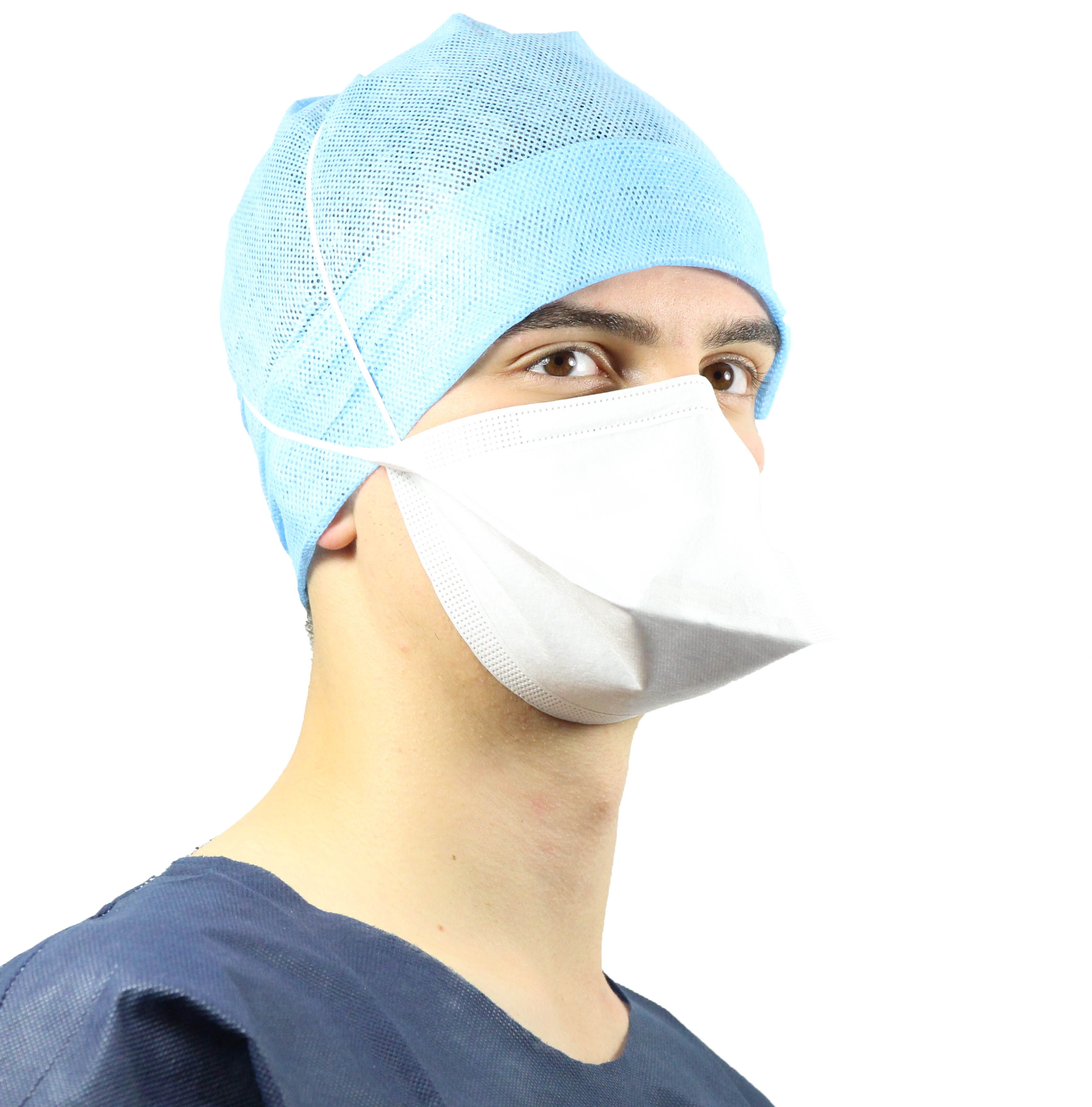Pesticides PPE - Choosing the right personal protective equipment
The use of pesticides, which are essential in many agricultural sectors, entails significant health risks for users. They can be irritating, toxic or even carcinogenic, affecting the skin, respiratory tract and sometimes the whole body. These hazards are present at every stage: preparation of mixtures, application and cleaning of equipment.
To limit these risks, wearing suitable Personal Protective Equipment (PPE) is not only essential but also a legal obligation. Type 3 or 4 overalls, which are splash- and spray-proof, are essential to protect the body.
Coveralls must comply with ISO 27065:2017, which provides specific protection against pesticides, depending on the level of occupational exposure.
PPE must be chosen according to the specific risks involved and bear the CE mark, guaranteeing that they comply with the standards in force. Adapting your clothing and following good protection practices is the key to preserving your health in this high-risk environment.
The main risks involved in using pesticides
Specific risks are present at every stage of the process, from preparation to application and clean-up. These risks require increased vigilance and the wearing of appropriate protective equipment to ensure the safety of operators.
1. Preparation: direct contact with products
During preparation, operators handle the products to prepare the spray mixture and fill the sprayer. This stage exposes them to accidental splashes, whether in liquid, powder or granular form. These substances, which are often concentrated, present risks of skin irritation, inhalation of toxic particles or intoxication in the event of contact with mucous membranes.
2. Application: prolonged exposure to chemicals
During application, exposure depends on the type of spray and the equipment used. Operators using cabless or backpack sprayers are particularly vulnerable to chemical aerosols. Risks include inhalation of fine droplets, skin contact and, in some cases, prolonged contamination due to unsuitable or insufficiently waterproof clothing.
3. Cleaning: an underestimated but omnipresent hazard
Cleaning is often seen as a minor step, but it is a critical one in terms of risk. Rinsing the tank, spray booms and nozzles exposes the operator to splashes of contaminated water and residual aerosols. This contact with concentrated chemical residues can lead to severe irritation or even poisoning if the protective measures are not strictly observed.
Our pesticides PPE
At every stage, appropriate protection (overalls, gloves, respiratory masks, etc.) is essential to reduce exposure and protect the health of operators. At Medicom, our mastery of regulatory requirements means we can offer reliable solutions tailored to professionals exposed to pesticides risks, combining safety, comfort and practicality.
Coveralls
Coveralls offer complete protection against chemicals, pesticides and biological hazards. They cover the entire body, preventing splashes and sprays, while providing a barrier against contaminants. Designed to be both hard-wearing and comfortable, they enable workers to protect themselves effectively while maintaining the freedom of movement they need for their tasks.
Our WeePro MaxGreen suit complies with ISO 27065:2017, guaranteeing certified and recognized protection.
Gloves
Wearing protective gloves is crucial to protect hands, which are constantly exposed to chemicals and toxic residues. Whether during mixture preparation, spray application, or equipment cleaning, gloves prevent irritation, burns, and the absorption of products through the skin, thus ensuring optimal safety.
Respiratory protection masks
Masks are essential to protect workers' respiratory tract from the inhalation of dust, chemicals, or toxic gases. They ensure effective filtration of fine particles and contaminants, thus preventing the risk of poisoning or respiratory irritation.
Goggles
Safety goggles are essential when handling, applying, and cleaning pesticides. They protect the eyes from chemical splashes during mixing, from aerosols during spraying, and from splashes of contaminated water when rinsing equipment, thus preventing irritation, burns, and serious injuries.
Shoecovers
Overshoes are also essential PPE, protecting feet and shoes from external contamination, particularly when applying chemicals or coming into contact with treated soil. They form an additional barrier against splashes and provide protection against harmful substances in contact with the ground.
Boots
Boots are crucial PPE because they protect workers from direct contact with chemicals, pesticides, and herbicides. They provide a barrier against splashes and projections while also ensuring protection against moisture and the risk of harmful substances infiltration.
How to choose the right pesticides PPE?
Nature of the risks |
Compliance with standard |
|
Identify the specific hazards for each task (liquid splashes, aerosol inhalation, skin contact). Choose equipment certified to meet standards, such as Type 3 or 4 chemical protection suits. |
Ensure that PPE complies with European regulations, including CE marking and specific standards (EN 14605 for coveralls, EN 374 for gloves, EN 166 for goggles). |
Comfort and Ergonomic |
Compatibility with the products used |
| Choose equipment suitable for prolonged wear, offering good mobility and sufficient breathability to avoid fatigue. | Check that PPE is resistant to the specific chemicals handled by consulting the Safety Data Sheets (SDS). |
Mandatory standards to comply with
For Gloves
![]() EN 374: This standard specifies the performance requirements for protective gloves against chemicals and microorganisms. It is crucial to ensure that gloves provide an effective barrier against the chemicals present in pesticides.
EN 374: This standard specifies the performance requirements for protective gloves against chemicals and microorganisms. It is crucial to ensure that gloves provide an effective barrier against the chemicals present in pesticides.
For Coveralls
![]() EN ISO 27065: This standard defines the requirements for protective suits used during the application of pesticides. It ensures that the suits provide adequate protection against the chemical risks specific to this sector.
EN ISO 27065: This standard defines the requirements for protective suits used during the application of pesticides. It ensures that the suits provide adequate protection against the chemical risks specific to this sector.
For Boots
![]() EN ISO 20345: This standard covers the safety requirements for protective footwear, including impact and compression resistance. It is essential for ensuring the mechanical protection of operators' feet.
EN ISO 20345: This standard covers the safety requirements for protective footwear, including impact and compression resistance. It is essential for ensuring the mechanical protection of operators' feet.
![]() EN 13832-3: This standard specifies the requirements for protective boots against chemicals, ensuring their resistance to the substances used.
EN 13832-3: This standard specifies the requirements for protective boots against chemicals, ensuring their resistance to the substances used.
For Goggles
![]() EN 166: This standard defines the requirements for safety goggles, including impact resistance and protection against chemicals. It is essential for ensuring the eye safety of operators.
EN 166: This standard defines the requirements for safety goggles, including impact resistance and protection against chemicals. It is essential for ensuring the eye safety of operators.
To guarantee your safety, choose PPE that complies with current standards, recognizable by the CE marking attesting to its compliance with European requirements.
Also consult the Safety Data Sheets (SDS) for pesticides PPE: they detail specific risks and recommend appropriate equipment, helping you make an informed and safe choice.




